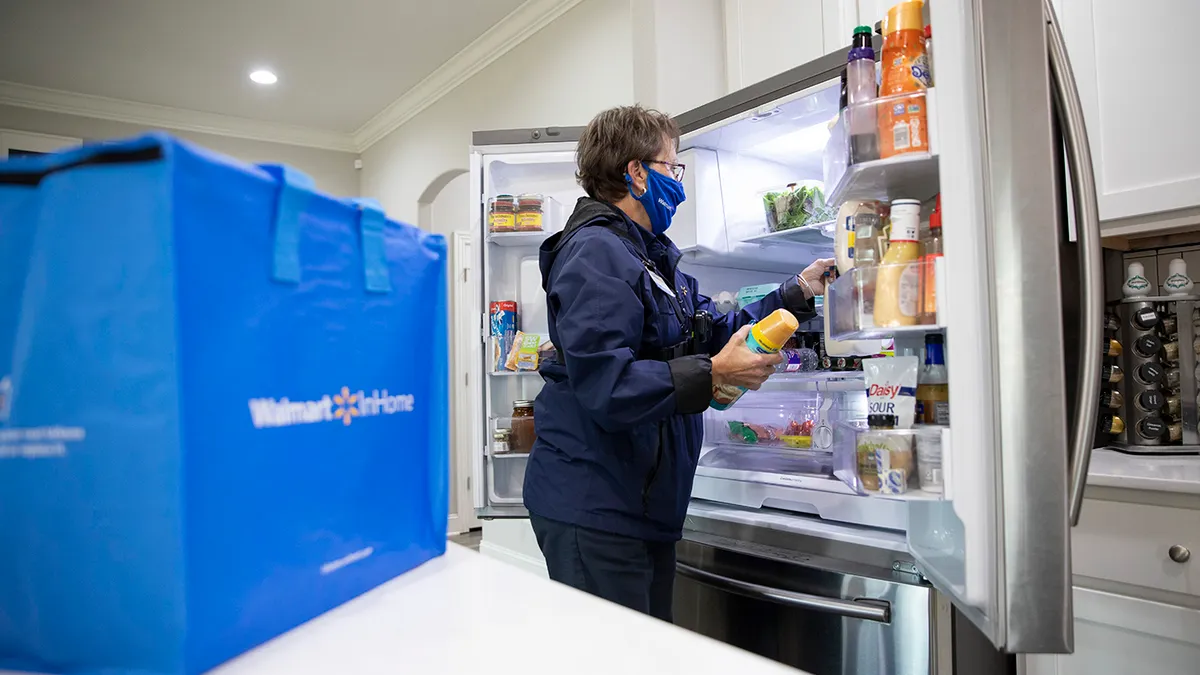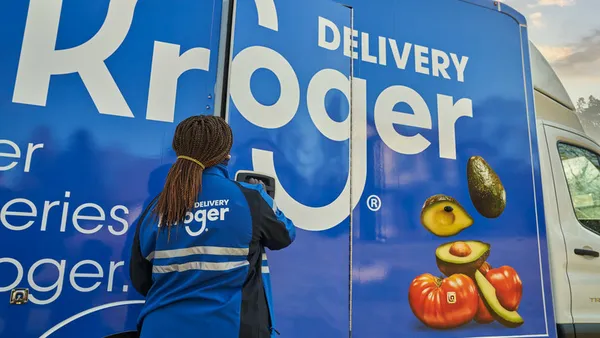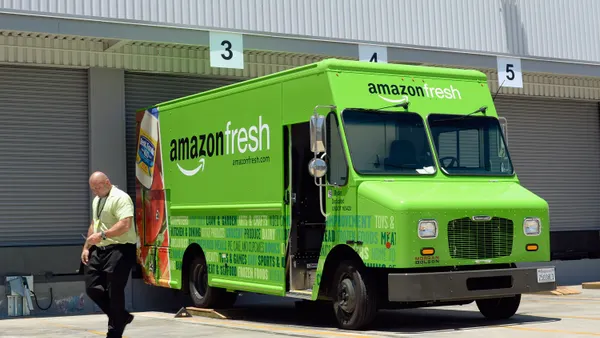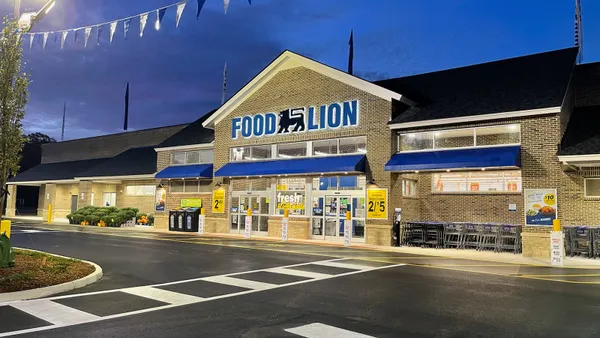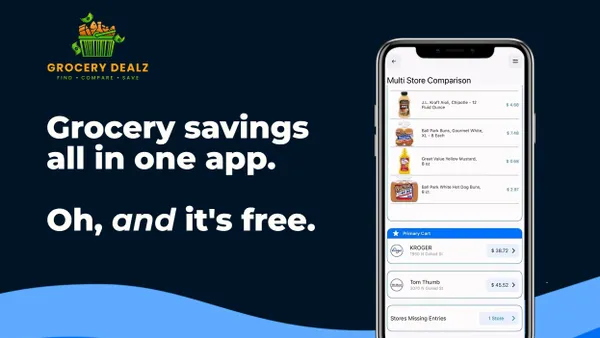Dive Brief:
- Online grocery sales in the U.S. increased 17% in July year over year, to $7.8 billion, as inflation and COVID-19 anxieties continue to drive increases in the channel, according to the latest monthly e-commerce report from Brick Meets Click and Mercatus.
- More than 68 million households bought groceries online in July, up 3% over the same month last year, fueled mainly by pickup and delivery.
- Mass merchandisers like Walmart seem to be benefiting most in this environment, with active users increasing and more shoppers saying they intend to keep shopping online with those companies.
Dive Insight:
Consumers’ desire to limit their spending amid ongoing inflation has recently challenged the growth of online grocery, which carries extra fees and, in many cases, markups on product prices.
But research from Brick Meets Click and Mercatus points to the considerable power that COVID-19 concerns still have to drive e-commerce sales. Altogether, these two forces are driving increases in e-commerce sales during the summer months. Online grocery sales in June were up 8.3% year over year.
“COVID-19 concerns coupled with inflation have forced a tradeoff between two fundamental desires for shoppers – not getting infected and not paying more than necessary,” David Bishop, partner at Brick Meets Click, said in a statement.
The firm’s July survey, which included 1,690 adult consumers, found that pickup and delivery usage rose sharply according to households’ level of concern over COVID-19. Among those that were “not at all concerned,” which constituted about one-fifth of households, just 36% said they’d used delivery or pickup service over the past month. That percentage rose to 56% among households that were “very” concerned and 89% among those that said they were “extremely” concerned about catching COVID.
Price inflation helped bump up average order value (AOV) for the month, which increased 11% year over year, led by delivery, which recorded a 13% AOV increase.
Mass merchandisers, which tend to offer lower prices than grocery chains, are unsurprisingly seeing growing interest among online shoppers in this environment.
Mass retailers saw a slight increase in activity from the most active online users, while grocery’s active-user base declined 10%. Mass retail customers, meanwhile, increased their monthly online orders by 5%, while e-commerce ordering among grocery shoppers declined 2%.
A higher percentage of shoppers (68%) said they intend to buy groceries online from mass retailers again in the next month than from grocery stores (58%). As cross shopping between grocery and mass retailers increases, shoppers may end up spending even more of their food dollars with retailers like Walmart in the coming weeks and months.
Pickup continues to be the preferred online shopping method for consumers, accounting for 39% of e-commerce orders, while delivery accounted for 31% in July. Order share among ship-to-home services continues to decline, and is now under 30%, according to the report



